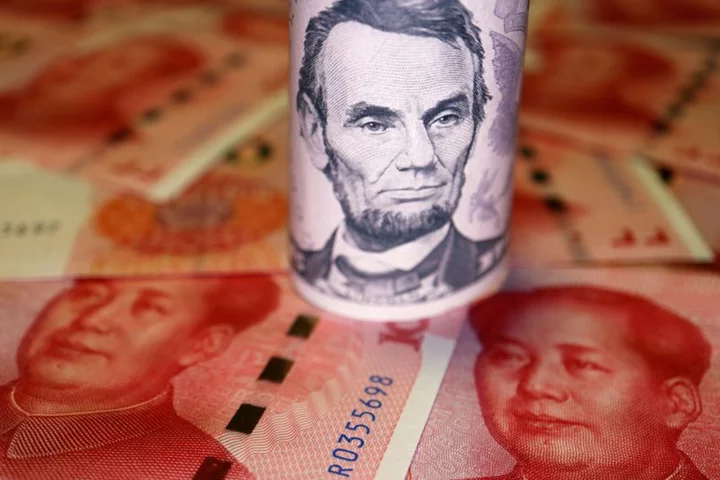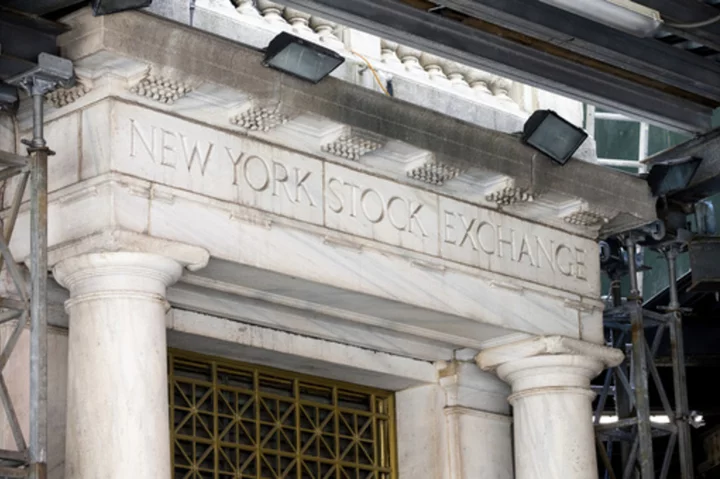By Kevin Buckland
TOKYO The dollar headed for a fifth winning week versus major peers, the longest streak for 15 months, as a resilient U.S. economy argued for high rates for longer while China's floundering recovery spurred demand for the safety of the U.S. currency.
On Friday, however, the dollar trimmed some of those gains as its rally against the yen kept traders on edge against the risk of intervention, and the yuan edged up after the People's Bank of China set a much-stronger-than-expected daily fixing.
The U.S. dollar index - which measures the currency against six developed-market rivals, including the yen and euro - eased 0.14% to 103.26 in the Asian morning, after touching a two-month high at 103.59 overnight.
For the week, it is set to gain 0.39%.
On Thursday, minutes from the Federal Reserve's last meeting showed most members of the rate-setting committee continued to see "significant upside risks to inflation," suggesting a bias toward further rate increases.
Strong economic data this week, particularly retail sales, had already bolstered the case for additional tightening.
That all helped push 10-year Treasury yields to the highest since October at 4.328% on Thursday.
"The market wants the Fed to go on hold, but the data just isn't supporting that," said Tony Sycamore, a markets analyst at IG.
"The risk aversion, the higher yields, the resilient economic data ... all of those things have played out to perfection for the U.S. dollar."
Some selling to lock in profit from the dollar's rally makes sense into the weekend, Sycamore added, but a break above 103.70 next week looks likely, opening the way for tests of the May peak at 104.70, and then 105.88.
Against the yen, the dollar eased 0.22% to 145.515 on Friday, after reaching a nine-month peak of 146.40 overnight.
In autumn of last year, the dollar's surge beyond 145 triggered the first yen buying intervention from Japanese authorities in a generation.
The euro rose 0.2% to $1.0892, rebounding from Thursday's six-week low of $1.08565.
Against the yuan, the dollar edged 0.11% lower to 7.2895 in offshore trading, with the Chinese currency garnering support from the central bank's setting of the official mid-point at 7.2006, more than 1,000 pips stronger than Reuters estimate.
The Chinese currency plumbed a nine-month trough of 7.3490 on Thursday in offshore markets.
China's economic troubles have deepened, with property developer China Evergrande <3333.HK> seeking Chapter 15 protection in a U.S. bankruptcy court.
Beijing has so far disappointed with stimulus, even as each recent data release has painted an increasingly grim picture of the economic outlook.
The Australian dollar, which often trades as a proxy for China and has tended to track the yuan in recent days, rose 0.25% to $0.6418, continuing its rebound from Thursday's nine-month low of $0.6365.
Meanwhile, the world's biggest cryptocurrency, bitcoin, languished near a two-month low following a more than 8.5% plunge to a low of $26,266 on Thursday. It last stood at $26,609.
"There comes a point when it just couldn't ignore the rise in (U.S. Treasury) yields any longer," said IG's Sycamore, who sees the potential for a decline to $24,500.
"The question becomes whether you want your assets in a speculative section of the market when you're in the middle of a bond market rout."
(Reporting by Kevin Buckland; Editing by Jacqueline Wong)









